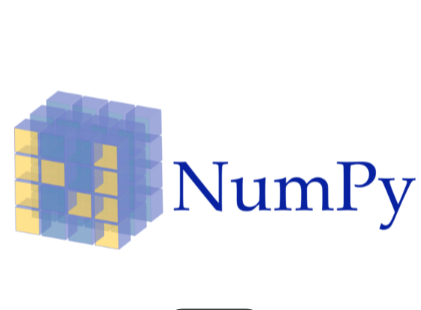Numpy
NumPy, short for Numerical Python, is a fundamental library in the Python ecosystem for scientific computing. At the heart of NumPy lies the ndarray (n-dimensional array) object, which provides a high-performance multi-dimensional array data structure and tools for working with these arrays. Understanding NumPy arrays is crucial for anyone involved in data analysis, machine learning, and scientific research, as they form the basis for many other data processing libraries and algorithms. In this blog post, we will provide a comprehensive overview of NumPy arrays, covering core concepts, typical usage scenarios, common pitfalls, and best practices. By the end of this post, you will have a deep understanding of NumPy arrays and be able to apply them effectively in real-world situations.

Functional Capabilities:
- Vectorized Computation
- Element-wise operations (add, subtract, multiply, divide) are performed without Python loops.
- Uses SIMD and BLAS under the hood for speed.
- Example: np.exp(x), np.sqrt(x), np.dot(a, b)
- Linear Algebra
- Matrix multiplication: np.matmul() or @
- Decompositions: np.linalg.svd(), np.linalg.eig()
- Solving systems: np.linalg.solve()
- Useful for ML models, recommendation systems, and scientific simulations.
- Random Sampling
- np.random module supports:
- Uniform, normal, binomial distributions
- Random integers, shuffling, permutations
- Used in simulations, bootstrapping, and synthetic data generation.
- Statistical Functions
- Descriptive stats: np.mean(), np.std(), np.var()
- Correlation and covariance: np.corrcoef(), np.cov()
- Useful for exploratory data analysis and feature scaling.
- Reshaping and Indexing
- Reshape arrays: np.reshape(), np.ravel()
- Slice and index: a[1:3, :], a[:, ::2]
- Boolean masking: a[a > 0]
- Enables flexible data manipulation in pipelines.
Use cases or problem statement solved with Numpy:
- Real-Time ML Scoring in FastAPI
- Problem: Backend APIs need to score user inputs against trained models with minimal latency, but Python loops slow down inference.
- Goal: Perform fast matrix operations for dot products, normalization, and activation functions inside FastAPI endpoints.
- NumPy Solution:
- Use np.dot() for linear transformations
- Apply np.exp() and np.clip() for activation layers
- Normalize inputs with np.linalg.norm() or np.mean()/np.std()
- Enables low-latency scoring in production APIs
- Sensor Data Aggregation for IoT Analytics
- Problem: High-frequency sensor streams contain noise and require smoothing, resampling, and compression before analysis.
- Goal: Efficiently process time series data for anomaly detection and dashboard visualization.
- NumPy Solution:
- Use np.dot() for linear transformations
- Apply np.exp() and np.clip() for activation layers
- Normalize inputs with np.linalg.norm() or np.mean()/np.std()
- Enables low-latency scoring in production APIs
- Image Preprocessing for Vision Models
- Problem: ML models require standardized image inputs—resized, normalized, and reshaped—but raw formats vary.
- Goal: Convert raw image arrays into model-ready tensors for classification or segmentation.
- NumPy Solution:
- Use np.reshape() and np.transpose() to format channels
- Normalize pixel values with np.divide() and np.clip()
- Stack batches using np.stack() or np.concatenate()
- Seamlessly integrates with OpenCV, PIL, and TensorFlow
- Monte Carlo Simulation for Financial Risk
- Problem: Finance teams need to simulate asset paths and risk scenarios using stochastic models, but Python loops are too slow.
- Goal: Run thousands of simulations efficiently for pricing and forecasting.
- NumPy Solution:
- Generate random walks with np.random.normal() and np.cumsum()
- Model portfolio returns using matrix algebra
- Use np.corrcoef() and np.cov() for risk analysis
- Enables scalable simulations for VaR, options pricing, and stress testing
Pros of Numpy:
- Blazing-Fast Vectorized Computation
NumPy replaces slow Python loops with vectorized operations that run at compiled C speed. This is critical for backend scoring engines, ML preprocessing, and real-time analytics. Whether you’re computing dot products, applying activation functions, or normalizing inputs, NumPy delivers low-latency performance.
- Memory-Efficient Array Structures
NumPy’s ndarray uses contiguous memory blocks and avoids Python object overhead. This allows you to process large arrays with minimal RAM usage—ideal for ERP logs, embeddings, or sensor streams. It also supports views and slicing without copying data, which is a huge win for performance.
- Foundation for Scientific and ML Ecosystem
NumPy is the numerical backbone of Pandas, scikit-learn, TensorFlow, PyTorch, and XGBoost. Any serious ML or analytics pipeline in Python relies on NumPy under the hood. Its interoperability with these libraries makes it indispensable for modular backend design.
- Rich Mathematical Toolkit
NumPy includes linear algebra (np.linalg), random sampling (np.random), FFTs (np.fft), and statistical functions (np.mean, np.std, np.corrcoef). This makes it suitable for everything from Monte Carlo simulations to image preprocessing and recommendation systems.
- Broadcasting and Multidimensional Support
NumPy’s broadcasting rules allow operations between arrays of different shapes without explicit reshaping. Combined with support for N-dimensional arrays, this enables elegant, scalable logic for matrix transformations, tensor operations, and batch processing.
Cons of Numpy:
- In-Memory Limitation
NumPy loads entire arrays into RAM. For datasets larger than memory (e.g., logs, telemetry, or embeddings), it will crash or slow down. This makes it unsuitable for big data unless paired with chunking or distributed tools.
- Single-Threaded Execution
NumPy is fast but not parallel by default. It doesn’t leverage multi-core CPUs unless explicitly offloaded to libraries like Numba, joblib, or Dask. For high-throughput backend services, this can be a bottleneck.
- No Native Schema or Type Enforcement
Unlike Pandas or SQL, NumPy arrays don’t enforce column names or data types beyond dtype. This flexibility can lead to silent bugs in production pipelines if shape or type assumptions break.
- Limited High-Level Abstractions
NumPy is low-level by design. It lacks the semantic richness of Pandas (e.g., labeled columns, groupby) or the modeling power of scikit-learn. For business logic, you often need to wrap NumPy in higher-level abstractions.
- Steep Learning Curve for Complex Operations
While basic usage is intuitive, advanced indexing, broadcasting, and reshaping can be cryptic. Debugging shape mismatches or memory views requires deep understanding—especially in multi-dimensional workflows
Alternatives to Numpy:
Pandas
- Strengths: Labeled tabular data, rich indexing, groupby, time series support.
- Trade-offs: Slower than NumPy for raw computation; higher memory overhead.
- Best Fit: ETL, reporting, feature engineering, business logic.
Dask
- Strengths: Parallelized NumPy-like arrays and Pandas-like DataFrames.
- Trade-offs: Slightly different syntax; requires cluster setup for full scale.
- Best Fit: Distributed ETL, large-scale ML preprocessing, backend parallelism.
Numba
- Strengths: JIT compiler for NumPy code; accelerates loops and custom logic.
- Trade-offs: Requires annotations and careful design.
- Best Fit: Performance-critical scoring, simulations, custom math kernels.
TensorFlow / PyTorch
- Strengths: GPU acceleration, automatic differentiation, tensor operations.
- Trade-offs: Heavier setup; designed for ML, not general-purpose analytics.
- Best Fit: Deep learning, vision pipelines, backend model serving.
Polars
- Strengths: Rust-based, blazing fast, supports lazy execution and multi-threading.
- Trade-offs: Newer ecosystem; less mature than NumPy.
- Best Fit: High-performance analytics, real-time dashboards, batch ETL.
SciPy
- Strengths: Built on NumPy; adds optimization, signal processing, statistics.
- Trade-offs: More specialized; not a replacement but a complement.
- Best Fit: Scientific computing, engineering models, backend simulations.
Answering some Frequently asked questions about Numpy:
Q1:What is NumPy primarily used for?
Answer: NumPy is the backbone of numerical computing in Python. It’s used for:
- Fast array and matrix operations
- Linear algebra and statistical analysis
- Feature engineering and preprocessing in ML
- Scientific simulations and modeling
- Backend scoring and real-time inference
Its ndarray structure enables low-latency, memory-efficient computation, making it ideal for both prototyping and production-grade pipelines.
Q2: How is NumPy different from Pandas?
Answer: NumPy is optimized for raw numerical arrays, while Pandas is built for labeled tabular data. NumPy is faster and more memory-efficient for mathematical operations, but lacks high-level abstractions like column names, groupby, or time series indexing. In practice:
- Use NumPy for matrix math, ML scoring, and image processing.
- Use Pandas for ETL, reporting, and business logic.
Q3: Can NumPy handle large datasets?
Answer: NumPy is in-memory only, meaning it can’t process datasets larger than your system’s RAM. For large-scale data:
- Use Dask for parallelized NumPy-like arrays.
- Use chunking with np.memmap() or stream data in batches.
- For distributed processing, consider PySpark or Vaex.
Q4: Is NumPy single-threaded or parallel?
Answer: By default, NumPy is single-threaded. It uses optimized C libraries (BLAS, LAPACK), which may internally leverage multi-threading for some operations. For explicit parallelism:
- Use Numba to JIT-compile NumPy code.
- Use joblib or multiprocessing for parallel execution.
- Use Dask or Modin for scalable, multi-core workflows.
Q5: How does NumPy handle missing values?
Answer: NumPy doesn’t natively support NaN or None in integer arrays. For floats, np.nan is used, but operations like np.mean() or np.sum() won’t ignore them unless explicitly handled. To manage missing data:
- Use np.isnan() to detect
- Use np.nanmean(), np.nanstd() for safe aggregation
- For mixed types or labeled data, switch to Pandas
Q6: What is broadcasting and why is it useful?
Answer: Broadcasting allows NumPy to perform operations between arrays of different shapes without explicit reshaping. For example, adding a scalar to a matrix or a row vector to each row. It simplifies code and improves performance by avoiding loops. Broadcasting is central to ML scoring, tensor operations, and batch processing.
Q7: Can NumPy be used in production APIs?
Answer: Absolutely. NumPy is ideal for real-time scoring, feature transformation, and backend math inside APIs (e.g., FastAPI). Just ensure:
- Data fits in memory
- Operations are vectorized
- You avoid row-wise .apply() or Python loops
For latency-sensitive endpoints, NumPy offers the speed and reliability needed for production.
Q8: How does NumPy support linear algebra?
Answer: NumPy’s np.linalg module includes:
- Matrix multiplication (np.dot, np.matmul)
- Solving systems (np.linalg.solve)
- Decompositions (np.linalg.svd, np.linalg.eig)
- Norms and inverses (np.linalg.norm, np.linalg.inv)
These are essential for ML models, recommendation engines, and scientific simulations.
Q9: How does NumPy integrate with ML frameworks?
Answer: NumPy is the default data format for:
- scikit-learn: accepts NumPy arrays for training and prediction
- XGBoost: uses NumPy for DMatrix construction
- TensorFlow/PyTorch: converts NumPy arrays to tensors via tf.convert_to_tensor() or torch.from_numpy()
It’s the glue between raw data and model-ready formats.
Q10: What are the best practices for optimizing NumPy performance?
Answer:
- Use vectorized operations instead of loops
- Avoid chained indexing; prefer .reshape() and .ravel() for memory views
- Profile with %timeit, np.info(), and memory_usage()
- Use dtype=’float32′ or int8 for memory-sensitive arrays
- Offload heavy logic to Numba, Cython, or compiled extension
Conclusion:
NumPy is a core building block for backend analytics, ML pipelines, and scientific computing. It excels in:
- Low-latency numerical computation
- Matrix and tensor operations
- Integration with ML and visualization tools
- Modular backend scoring and preprocessing
Use NumPy When:
- You need fast, memory-efficient array operations
- You’re building ML scoring engines, image pipelines, or financial simulations
- You want tight control over performance and memory
- You’re integrating with Pandas, scikit-learn, or TensorFlow
Consider Alternatives When:
- You’re working with big data or need parallelism
- You need labeled data structures or business logic
- You’re building GPU-accelerated ML models
- You want schema enforcement or high-level abstractions




